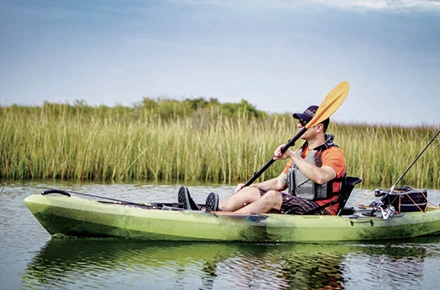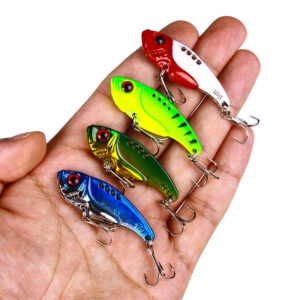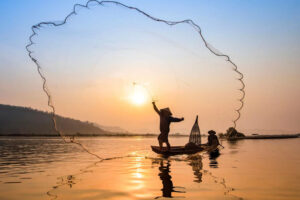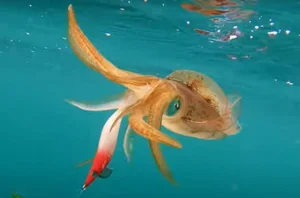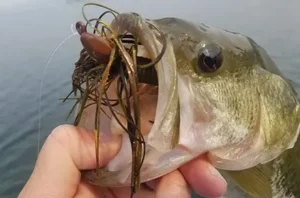Kayak fishing is not just about catching fish; it’s a serene blend of enjoying the sport of fishing, exercising your body, and embracing the great outdoors. Kayaks offer stability and maneuverability, making them the preferred choice for both novice anglers and seasoned fishing enthusiasts.
Introduction to Kayak Fishing
What is Kayak Fishing?
Kayak fishing involves using a kayak to navigate waters and catch fish. Unlike traditional fishing from the shore or a boat, kayak fishing provides a unique experience of being closer to the water and immersing yourself in nature.

Benefits of Kayak Fishing
Kayak fishing isn’t just about the catch—it’s about the journey. It allows you to explore remote areas, enjoy the tranquility of nature, and experience the thrill of reeling in your prize catch.
Types of Kayak Fishing
Sit-on-Top Kayaks
Sit-on-top kayaks are popular among anglers for their stability and ease of use. They offer ample space for movement and are ideal for beginners.
Sit-in Kayaks
Sit-in kayaks provide better protection from the elements and are suitable for fishing in rougher waters. However, they may require more skill to maneuver.
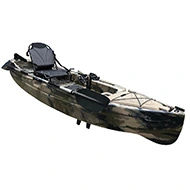
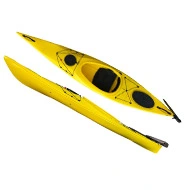
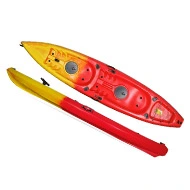
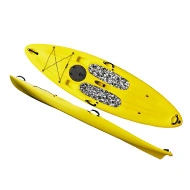
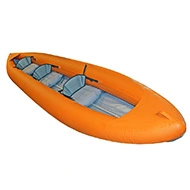
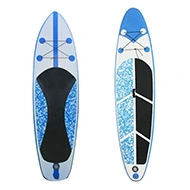
Factors to Consider When Choosing a Kayak for Fishing
Stability
Stability is crucial for kayak fishing, especially when casting lines or reeling in fish. Opt for a kayak with a wide hull for better stability on the water.
Durability
Fishing kayaks are often subjected to harsh conditions, so choosing a durable kayak that can withstand rough weather is essential for longevity.
Comfort
Since you’ll be spending long hours on your kayak, comfort is paramount. Look for features like adjustable seats and ample legroom to ensure a pleasant fishing experience.
Storage Capacity
Adequate storage is vital for stowing fishing gear, bait, and other essentials. Choose a kayak with ample storage compartments to keep your equipment organized and easily accessible.
Rigging Options
Many fishing kayaks come with rigging options such as rod holders, fish finders, and GPS units. Consider your fishing style and choose a kayak with the necessary rigging for your needs.
Benefits of Kayak Fishing
Access to Remote Areas
One of the greatest advantages of kayak fishing is the ability to access remote fishing spots that are inaccessible by larger boats or from the shore.
Stealth
Kayaks are incredibly quiet and allow anglers to approach fish without disturbing them, increasing the chances of a successful catch.
Versatility
Kayak fishing offers versatility in techniques, including trolling, casting, jigging, and fly fishing, making it suitable for anglers of all skill levels.
Enjoyment
Above all, kayak fishing is about enjoying the outdoors, connecting with nature, and experiencing the thrill of the chase.
Basic Strokes of Paddling a Kayak
Mastering basic paddling techniques is essential for efficient maneuvering and control of your kayak on the water. Whether you’re navigating calm lakes or tackling whitewater rapids, understanding these fundamental strokes will greatly improve your kayaking skills.
Forward Stroke
The forward stroke is the foundation of kayaking and is used to propel your kayak forward. To perform this stroke:
- Sit upright in your kayak with your feet resting comfortably on the foot pedals.
- Grip the paddle with both hands, positioning them slightly wider than shoulder-width apart.
- Submerge the paddle blade fully into the water near your toes, ensuring it is perpendicular to the kayak’s direction.
- Rotate your torso and core muscles as you pull the paddle blade towards your hip, using your legs and hips to generate power.
- Release the paddle blade from the water once it reaches your hip and repeat the motion on the opposite side to continue forward momentum.
Reverse Stroke
The reverse stroke is used to move your kayak backward or to slow down. To execute this stroke:
- Start with the paddle blade near your hip, submerged in the water at a slight angle away from the kayak.
- Push the paddle blade away from your hip while rotating your torso and core in the opposite direction.
- Use your arms, legs, and hips to generate power as you pull the paddle blade towards your toes.
- Continue the motion until the kayak slows down or moves backward, then repeat on the other side if necessary.
Sweep Stroke
The sweep stroke is a turning maneuver used to change the direction of your kayak. There are two types of sweep strokes: forward sweep and reverse sweep.
Forward Sweep Stroke:
- Start with the paddle blade near the stern (rear) of the kayak, fully submerged in the water at a slight angle away from the kayak.
- Rotate your torso and core in the direction you want to turn while extending your arm and sweeping the paddle blade in a wide arc away from the kayak’s hull.
- Use your legs and hips to shift your weight and lean the kayak into the turn for better stability.
- Continue the sweeping motion until the kayak turns in the desired direction, then return the paddle to the starting position.
Reverse Sweep Stroke:
- Begin with the paddle blade near the bow (front) of the kayak, fully submerged in the water at a slight angle away from the kayak.
- Rotate your torso and core in the direction you want to turn while extending your arm and sweeping the paddle blade in a wide arc towards the kayak’s hull.
- Lean the kayak away from the direction of the turn to maintain stability and prevent capsizing.
- Complete the sweeping motion until the kayak turns in the desired direction, then return the paddle to the starting position.
Draw Stroke
The draw stroke is used to move the kayak sideways, either towards or away from an object or to reposition yourself. To perform this stroke:
- Position the paddle blade perpendicular to the side of the kayak and fully submerged in the water.
- Pull the paddle blade towards the kayak’s hull while rotating your torso and core in the direction you want to move.
- Use your legs and hips to shift your weight and aid in pulling the kayak sideways.
- Once the kayak has moved the desired distance, return the paddle to the starting position and adjust your body position as needed.
Sweep Draw Stroke
The sweep draw stroke combines elements of the sweep stroke and draw stroke to perform a turning maneuver while moving the kayak sideways. To execute this stroke:
- Begin by performing a forward sweep stroke on one side of the kayak to initiate the turn.
- As the kayak begins to turn, transition into a draw stroke on the same side to move the kayak sideways in the desired direction.
- Use your legs, hips, and torso rotation to maintain balance and control throughout the maneuver.
- Once the kayak has completed the turn and moved sideways, return the paddle to the starting position and adjust your body position as necessary.
Bracing Stroke
The bracing stroke is a defensive maneuver used to prevent capsizing or stabilize the kayak in rough water conditions. To perform this stroke:
- Keep the paddle close to the surface of the water with the blade parallel to the surface.
- Extend your arm and use the paddle as a brace against the water to provide support and stability.
- Lean your upper body away from the direction of the lean to counterbalance the kayak and prevent tipping.
- Keep your head and body centered over the kayak and maintain a low center of gravity to enhance stability.
Mastering these basic
strokes will not only improve your kayaking skills but also enhance your overall paddling experience. Practice regularly in different water conditions to become proficient in executing each stroke with precision and confidence. Whether you’re exploring serene lakes, navigating winding rivers, or challenging yourself with whitewater rapids, these fundamental techniques will serve as invaluable tools for safe and enjoyable kayaking adventures.
Kayak Fishing Safety Tips
Before heading out for a day of kayak fishing, it’s essential to prioritize safety. Here are some crucial safety tips to keep in mind:
Wear a Personal Flotation Device (PFD):
Always wear a properly fitting PFD when kayaking, especially when kayak fishing. In the event of an accident or capsizing, a PFD can save your life by keeping you afloat.
Dress for the Water Temperature:
Dress appropriately for the water temperature, not just the air temperature. In colder water, wear insulating layers or a wetsuit to prevent hypothermia.
Inform Someone of Your Plans:
Before embarking on your kayak fishing trip, inform a friend or family member of your plans, including your intended route and estimated return time. This ensures that someone knows your whereabouts in case of an emergency.
File a Float Plan:
Consider filing a float plan with a trusted individual or local authorities, detailing your planned route, launch, and return times. This can aid search and rescue efforts in the event of an unexpected delay or emergency.
Carry Safety Equipment:
Always carry essential safety equipment such as a whistle or air horn to signal for help in an emergency. Additionally, consider carrying a first aid kit, knife, and waterproof flashlight for added safety.
Stay Hydrated:
Staying hydrated is crucial, especially when spending prolonged periods on the water. Carry an ample supply of water and drink regularly to prevent dehydration, particularly on hot days.
Be Aware of Your Surroundings:
Stay vigilant and aware of your surroundings at all times. Watch out for other watercraft, swimmers, and potential hazards such as submerged rocks or debris.
Avoid Overloading Your Kayak:
Avoid overloading your kayak with excessive gear or weight, as this can compromise stability and maneuverability. Pack only essential fishing gear and equipment to ensure a safe and enjoyable experience.
Paddle Within Your Skill Level:
Paddle within your skill level and be honest about your abilities. Avoid tackling waters or conditions beyond your capabilities to minimize the risk of accidents or injuries.
Be Prepared for Emergencies:
Lastly, always be prepared for emergencies by familiarizing yourself with basic rescue techniques, such as self-rescue and assisted rescue. Carry a waterproof communication device, such as a cell phone or VHF radio, to call for help if needed.
By following these safety tips and exercising caution, you can enjoy a safe and rewarding kayak fishing experience.
Conclusion
Kayak fishing offers a unique blend of adventure, relaxation, and connection with nature. Whether you’re a seasoned angler or new to the sport, kayaking provides endless opportunities for exploration and discovery on the water. By choosing the right kayak, mastering basic paddling techniques, and prioritizing safety, you can embark on unforgettable fishing adventures and create lasting memories on the water.
Kayak Fishing FAQs
What are the benefits of kayak fishing?
Kayak fishing offers numerous benefits, including access to remote fishing spots, stealthy approaches to fish, versatility in fishing techniques, and the sheer enjoyment of being on the water.
What types of kayaks are suitable for fishing?
Both sit-on-top kayaks and sit-in kayaks are suitable for fishing, each offering distinct advantages. Sit-on-top kayaks are popular for their stability and ease of use, while sit-in kayaks provide better protection from the elements.
What safety precautions should I take when kayak fishing?
When kayak fishing, always wear a personal flotation device (PFD), dress appropriately for the water temperature, inform someone of your plans, carry essential safety equipment, and paddle within your skill level.
How do I choose the right kayak for fishing?
When choosing a kayak for fishing, consider factors such as stability, durability, comfort, storage capacity, rigging options, and your specific fishing needs and preferences.
What basic paddling techniques should I master for kayak fishing?
It’s essential to master basic paddling techniques such as the forward stroke, reverse stroke, sweep stroke, draw stroke, sweep draw stroke, and bracing stroke for efficient maneuvering and control of your kayak on the water.
With these tips and techniques in mind, you’re ready to embark on your next kayak fishing adventure and reel in some memorable catches!
Get an Instant Quote With Fishkoolsports
Interested in fishing? At Fishkoolsports, we offer a wide range of fishing products including fishing lines, rods and reels, kayaks, and other fishing products at competitive prices. Reach out today for an instant quote.Get started with Fishkoolsports to begin your fishing journey.

